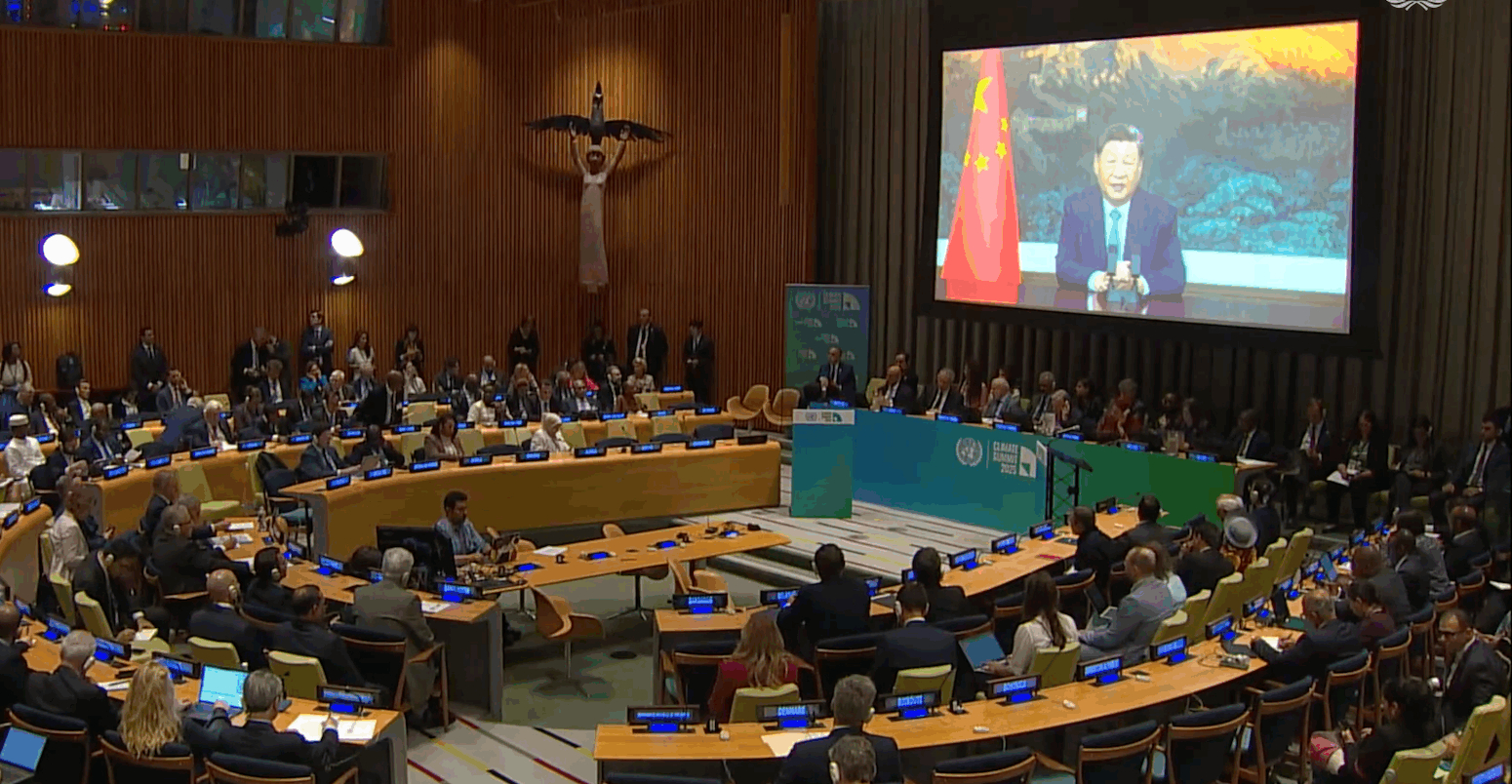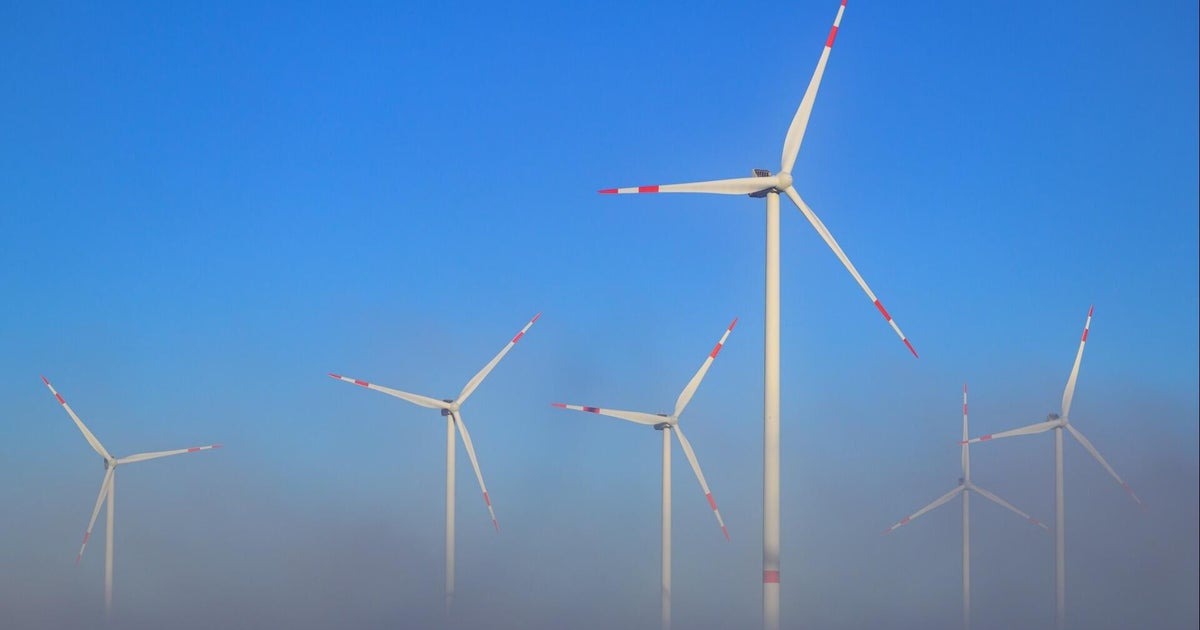Report on Global Climate Governance and Sustainable Development Goals
Introduction: China’s Renewed Climate Commitments
In a recent address to the United Nations, Chinese President Xi Jinping announced China’s new Nationally Determined Contribution (NDC) target for 2035. This declaration is positioned as a significant step toward reinforcing global climate governance, particularly in the context of the 10th anniversary of the Paris Agreement. The new commitments aim to inject confidence into international efforts to achieve Sustainable Development Goal 13 (Climate Action), especially as other major economies face challenges in maintaining the momentum of their green transition agendas.
Analysis of China’s Climate Ambition in the Context of the SDGs
Criticism regarding the perceived lack of ambition in China’s climate targets often overlooks key principles of global development and equity, central to the Sustainable Development Goals framework.
Common but Differentiated Responsibilities
- SDG 8 (Decent Work and Economic Growth): As the world’s largest developing nation, China is undergoing a dual process of economic development and green transition. A significant portion of its emissions is linked to the production of consumer goods for a global market, reflecting its position in the international division of labor.
- Equity in Emissions: China’s per capita carbon emissions remain considerably lower than those of developed nations like the United States. This highlights the principle of differentiated responsibilities, where historical emissions and current development status are considered.
- Capability and Ambition: For China, which is still building its green industrial capacity, setting overly ambitious targets could strain its progress toward both economic and environmental goals, including SDG 9 (Industry, Innovation and Infrastructure).
China’s Progress Toward Climate and Energy Goals
China’s 2035 NDC targets demonstrate substantial progress in aligning national policy with global sustainability objectives, particularly SDG 7 and SDG 13.
- Expanded Mitigation Scope: For the first time, the NDCs cover all greenhouse gases, including methane, nitrous oxide, and fluorinated gases, representing a more comprehensive approach to fulfilling SDG 13.
- Absolute Emission Targets: China has committed to its first absolute emissions target, pledging to reduce economy-wide net greenhouse gas emissions by 7 to 10 percent below peak levels by 2035.
- Advancing SDG 7 (Affordable and Clean Energy): The plan includes a commitment to install a combined capacity of at least 3.6 terawatts of solar and wind power by 2035, a threefold increase from the 2030 target.
- Policy Innovation for Sustainability: Progress is driven by policy tools such as expanding the National Carbon Emissions Trading Market and promoting new-energy vehicles, which supports SDG 11 (Sustainable Cities and Communities) and SDG 12 (Responsible Consumption and Production).
Comparative Global Actions and the Imperative of SDG 17
A comparative analysis reveals disparities in policy stability and execution among major global actors, underscoring the importance of SDG 17 (Partnerships for the Goals).
Challenges in Developed Nations
- European Union: The EU’s path toward climate neutrality faces internal challenges, including economic pressures and the rise of political factions skeptical of climate policies.
- United States: The U.S. has demonstrated significant policy volatility, including multiple withdrawals from international climate agreements. This inconsistency undermines global trust and the collective effort required to meet Paris Agreement goals. It is estimated that recent policy shifts could add 4 billion tons of pollution to the atmosphere by 2030.
The Path Forward: A Call for Global Partnership
China has set an ambitious timeline of 30 years to transition from carbon peaking to carbon neutrality, a significantly shorter period than the 71 years for the EU and 43 years for the U.S. However, national efforts alone are insufficient. To avert a climate crisis and secure a sustainable future, a renewed commitment to SDG 17 is essential. Developed countries must shoulder their historical responsibility by leading in emissions reduction and providing developing nations with the necessary financial and technological support to achieve a just and effective global green transition.
Analysis of Sustainable Development Goals in the Article
1. Which SDGs are addressed or connected to the issues highlighted in the article?
-
SDG 7: Affordable and Clean Energy
- The article directly addresses this goal by highlighting China’s commitment to renewable energy sources. It specifically mentions China’s pledge to significantly increase its solar and wind power capacity and promote new-energy vehicles.
-
SDG 9: Industry, Innovation, and Infrastructure
- This goal is relevant as the article discusses China’s efforts in green technology and innovation in policy tools. The expansion of the National Carbon Emissions Trading Market and the focus on making new-energy vehicles mainstream are examples of innovating industrial and economic infrastructure for sustainability.
-
SDG 12: Responsible Consumption and Production
- The article connects to this SDG by discussing the source of China’s emissions, noting that “a significant portion of its emissions come from the production of consumer goods.” It also touches upon the need to “decouple its traditional economic development model and carbon emissions,” which is a core principle of sustainable production.
-
SDG 13: Climate Action
- This is the central theme of the entire article. It revolves around global climate governance, the Paris Agreement, Nationally Determined Contributions (NDCs), emissions reduction targets, and the urgency of addressing climate change to avoid a “climate catastrophe.”
-
SDG 17: Partnerships for the Goals
- The article emphasizes the need for international cooperation to tackle climate change. It mentions the Paris Agreement, the role of the United Nations, and the principle of “common but differentiated responsibilities.” It explicitly calls for developed countries like the U.S. and Europe to provide “financial and technological support” to developing countries, which is a key aspect of global partnership.
2. What specific targets under those SDGs can be identified based on the article’s content?
-
Under SDG 7 (Affordable and Clean Energy)
- Target 7.2: By 2030, increase substantially the share of renewable energy in the global energy mix. The article directly relates to this target by stating, “China pledges to install a combined capacity of at least 3.6 terawatts of solar and wind power by 2035, triple the 2030 figure.”
- Target 7.3: By 2030, double the global rate of improvement in energy efficiency. The promotion of “new-energy vehicles the mainstream choice in new car sales” is a direct effort to improve energy efficiency in the transport sector.
-
Under SDG 9 (Industry, Innovation, and Infrastructure)
- Target 9.4: By 2030, upgrade infrastructure and retrofit industries to make them sustainable, with increased resource-use efficiency and greater adoption of clean and environmentally sound technologies and industrial processes. The article mentions China’s development of “green technology and industries” and the expansion of the “National Carbon Emissions Trading Market to cover major high-emission sectors” as policy innovations to achieve this.
-
Under SDG 13 (Climate Action)
- Target 13.2: Integrate climate change measures into national policies, strategies and planning. The article is centered on this target, detailing “China’s new Nationally Determined Contribution target for 2035” and its plan for “economy-wide mitigation actions that encompass all greenhouse gases.”
-
Under SDG 17 (Partnerships for the Goals)
- Target 17.7: Promote the development, transfer, dissemination and diffusion of environmentally sound technologies to developing countries on favourable terms. This is implied in the article’s conclusion, which calls on developed countries to provide “developing countries with necessary financial and technological support to address climate change.”
- Target 17.16: Enhance the global partnership for sustainable development, complemented by multi-stakeholder partnerships that mobilize and share knowledge, expertise, technology and financial resources. The entire discussion about the Paris Agreement, the UN Climate Summit, and the need for “countries around the world [to] make joint efforts” speaks to this target.
3. Are there any indicators mentioned or implied in the article that can be used to measure progress towards the identified targets?
-
For SDG 7 Targets:
- Indicator for Target 7.2: The installed capacity of renewable energy. The article provides a specific metric: “a combined capacity of at least 3.6 terawatts of solar and wind power by 2035.”
-
For SDG 13 Targets:
- Indicator for Target 13.2: The reduction in greenhouse gas emissions. The article specifies China’s commitment “to reducing economy-wide net greenhouse gas emissions by 7 to 10 percent below peak levels by 2035.” It also notes the inclusion of “non-CO2 greenhouse gases, such as methane, nitrous oxide and fluorinated gases” in its total emissions control scope, which serves as a qualitative indicator of progress.
-
For SDG 17 Targets:
- Indicator for Target 17.7: The flow of financial and technological support from developed to developing countries. While no specific numbers are given, the article implies this as a key measure of responsibility, stating that developed countries “should shoulder their responsibility by… providing developing countries with necessary financial and technological support.”
4. Summary Table of SDGs, Targets, and Indicators
| SDGs | Targets | Indicators |
|---|---|---|
| SDG 7: Affordable and Clean Energy | 7.2: Increase the share of renewable energy. | Installed capacity of at least 3.6 terawatts of solar and wind power by 2035. |
| SDG 9: Industry, Innovation, and Infrastructure | 9.4: Upgrade infrastructure and retrofit industries to make them sustainable. | Expansion of the National Carbon Emissions Trading Market; making new-energy vehicles the mainstream choice in new car sales. |
| SDG 13: Climate Action | 13.2: Integrate climate change measures into national policies. | Commitment to reduce net greenhouse gas emissions by 7-10% below peak levels by 2035; inclusion of non-CO2 gases in emissions control. |
| SDG 17: Partnerships for the Goals | 17.7: Promote transfer of environmentally sound technologies to developing countries. | Provision of financial and technological support from developed to developing countries. |
Source: chinausfocus.com







